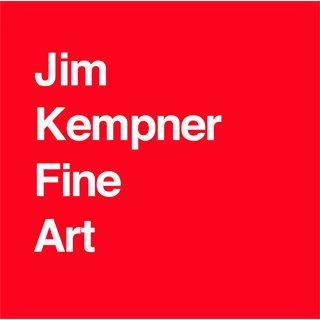Keith Haring
rose to prominence in the1980s in New York City. Immersing himself in New York’s downtown culture, he quickly became a fixture on the artistic scene, befriending other artists such as Jean-Michel Basquiat and Kenny Scharf, as well as many of the most innovative cultural figures of the period. He bridged the gap between the art world and the street, graffiting city subways and sidewalks before committing to a studio practice. Haring united the appeal of cartoons with the raw energy of Art Brut artists such as Jean DuBuffet as he developed a distinct pop-graffiti aesthetic that comprised energetic, boldly outlined figures against solid or patterned backdrops. His major themes included exploitation, subjugation, drug abuse, and the threat of nuclear holocaust; Haring boldly engaged with social issues, especially after receiving an AIDS diagnosis in 1987. His work has been the subject of solo shows at the Brooklyn Museum, the San Francisco Museum of Modern Art, and the Albertina Museum in Vienna, among other institutions.

